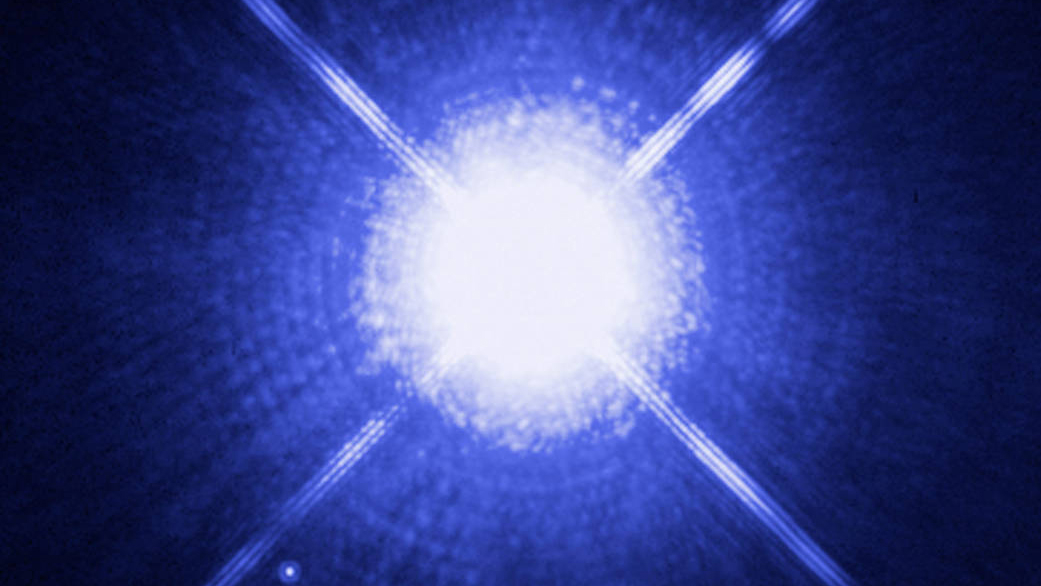Dwarf star is beginning to become a diamond
The team has discovered a dwarf star that could become a diamond just 104 light-years away. According to the experts, it is still in the early stages of its metamorphosis. The star will therefore gradually crystallize in order to be able to develop into a crystal at some point.
What is special about this find: The team of scientists from the Universities of Southern Queensland, Victoria, Warwick and the Kavli Institute for Astrophysics and Space Research suspects that the star is in the very early stages of such a transformation. But first things first.
The team christened the star in its first publication at the beginning of June on the pre-print server “arXiv” under the title “A Crystallizing White Dwarf in a Sirius-Like Quadruple System” (A crystallizing white dwarf in a Sirius-like quadruple system) and in the journal “Monthly Notices of the Royal Astronomical Society” under the name “White dwarf HD 190412 C”.
This consists primarily of metallic oxygen and is part of a quadruple system called “HD 190412”. Until the find, the prevailing opinion of the experts was that this system only houses three stars.
In addition to the quadruple system, the Australians discovered that the find binary star system of the constellation Canis Major.
A small white dwarf is usually referred to as a small star that represents the last stage of evolution of a low-mass star. This type of star is formed from a red giant.
It has shed its outer shell. Only the core remains. According to experts, our sun goes through something similar in about six billion years.
This image shows a star slowly transforming into a white dwarf. (Image: NASA, W. Sparks and R. Sahai)
The diameter of a white dwarf is only a few thousand to a maximum of ten thousand kilometers – i.e. smaller than our earth, but equipped with the mass of our sun and surface temperatures of only 10,000 to 100,000 degrees Kelvin. Therefore, the glow occurs in mostly white color.
All stars eventually transform into something new. After glowing from a nuclear fusion inside, they run out of fuel – this can result in such a white dwarf within tens of billions of years. They cool down because they have no additional energy sources – they end up as hypothetical black dwarfs, which can only be detected by the action of their gravity.
With the specific find, however, the scientists noticed that the cooling process was delayed. In their publication at the beginning of June, they stated that they were able to determine the specific age for the first time. The age of the system is about 7.3 billion years. The white dwarf alone is about 4.2 billion years old.
The discrepancy is 3.1 billion years, suggesting that the crystallization rate slowed the white dwarf’s cooling rate by about a billion years.
The cooling is having a massive impact on the star’s brightness and color. The temperature-mass profile indicates that the star will turn into a diamond. The experts therefore assume that in a few billion years the center of the star will develop into a dense, hard cosmic diamond consisting of crystallized carbon and oxygen.
In the first publication, the team writes: “Because of its association with these three other main sequence companions, this is the first crystallizing white dwarf whose overall age can be determined from the outside, a fact we are capitalizing on by attempting to determine one by core crystallization to empirically measure the cooling delay caused in the white dwarf.”
“We suspect that the discovery of this system just 32 parsecs away suggests that similar Sirius-like systems with crystallizing white dwarfs are likely numerous.”
Editor’s Recommendations
The team therefore expects future discoveries to allow for more accurate testing of crystallization models for white dwarfs. “We conclude that the discovery of the HD 190412 system has opened a new avenue for understanding crystallizing white dwarfs.”



